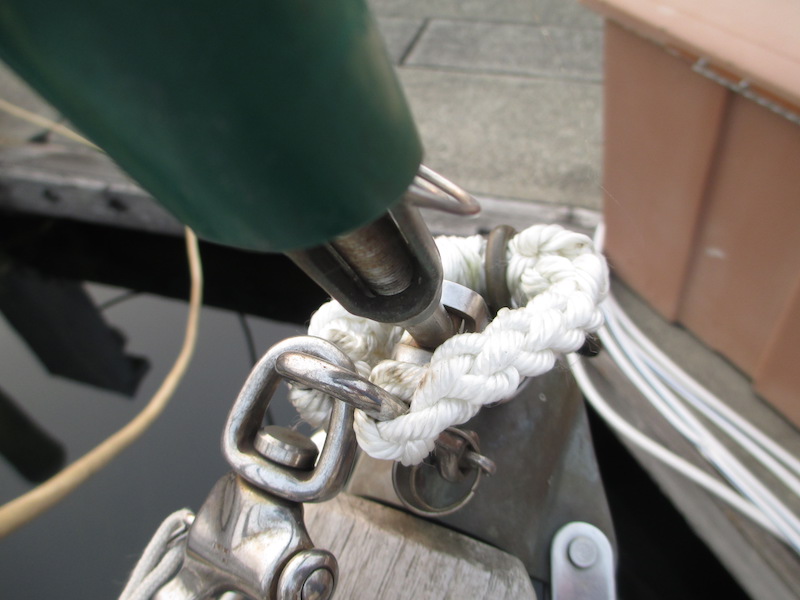
The Gennaker Tack, Part 2
Resourceful sailor Joshua Wheeler was looking for an easier way to handle his gennaker while sailing shorthanded. “I reinserted the D-shackle into the chain splice lead I had carefully kept intact and reinstalled the shackle to its original point on the cranse iron. The line forms a loop around the forestay on which the snap hook can freely slide from one side of the D-shackle to the other. Finally, I added whipping to the spliced line where the tucks met, securing and smoothing the area so the snap hook wouldn’t get snagged on them.
Here is the result from part 1 of his modification:
Does it work? Yes, it does. Now when I set up the gennaker, I attach the pendant to the snap hook on the loop. When jibing, I let the sheet fly and put the helm over, and the gennaker travels around the outside of the forestay. I jibe over the mainsail, pull in the opposite sheet, and trim the sail. There isn’t a need to douse the sail or unsnap the pendant. Barring any tangling or snagging of the lines, I don’t need to leave the cockpit and the helm.

Like any hardware and lines, I keep an eye on it for chafe and wear. The direction of pull on the loop varies with the course I’m on. This direction will be some combination of forward, up and off to the side. The more off to the side, the more it will rub against the toggle jaw on the forestay, creating a twisting force on the D-shackle and cranse iron. I wondered if this should be a concern — that my low-budget modification would cause high budget repairs.

After working the load numbers for the sail and comparing the forces and directions imposed on those of a traditional setup, I determined them to be comparable. Over time, the spliced line may chafe through from the sliding hook and from rubbing against the iron and the toggle jaw, but so far this hasn’t happened and is a good sign the forces are not too high. In the future, I may trade out the snap hook for a proper stainless steel snap shackle for higher strength and corrosion resistance. When I have the hardware, the design allows me to disassemble and reassemble the soft shackle in a matter of moments. I have yet to add the pole to the equation, but whereas the complexity of the jibe before made it out of the question, this simplification opens up new possibilities.
On Sampaguita, the gennaker can be a very useful sail and can make the difference between sailing and motoring. This small and simple modification has made a huge difference in safety and enjoyment. I am no longer hesitant to fly the sail, debating whether it’s worth the work and risk of tending and jibing. Once I had established a need and familiarized myself with the equipment and procedures, a simple solution became apparent. A small piece of extra line, an extra snap hook, some creative thought and some marlinspike skills were all it took.

The Resourceful Sailor hopes to give you ideas on how to have big adventures on small boats and budgets. Remember, keep your solutions prudent and safe, and have a blast.

I’ve had a similar setup on a couple of cruising boats. When running down, I often double or triple reef the main and sheet the boom to near the centerline. This dampens rolling without spoiling airflow to the gennaker. The purpose of reefing the main is to flatten it to minimize slatting when the boat does roll. You don’t need a full main to do a lot of roll damping.
Paul, thank you for your input and sharing your experience. And thank you for reading.